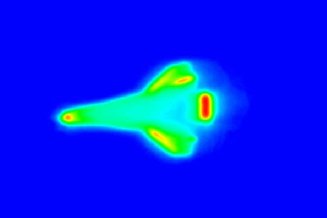Abnormal responses to mechanical stress and enthesitis
The purpose of this page is to explain in lay terms why patients get inflammation at insertions.
Insertions have a specialised tissue called fibrocartilage.
The purpose of this tissue is to resist the high levels of stress at insertions.
When tendons and ligaments are pulling on insertions points they also exert lots of pressure over the adjacent bone.
The adjacent bone is also lined by fibrocartilage.
The high level of stressing of this tissue is associated with micro-damage.
In people without arthritis this undergoes repair without the subject being aware.
Genetic or environmental factors or both lead to failure of this process.
This can lead to inflammation or degeneration and disease.
The analogy of the amazing engineering of the NASA space shuttles is used to offer a simple analogy to help patients understand their enthesitis related disease.
 |
| The enthesis or insertion is a site of high tissue stress. A stress resisting tissue called fibrocartilage (dark blue) is present at this site. However, when the tendon is being pulled during muscle contraction it gets compressed against the bones which is away from the insertion site. The bones and undersurfaces of the tendon therefore may be lined with fibrocartilage too. This spongy tissue acts like a heat resistant shield and protects the underlying bone in red from damage. In disease states, these sites are can become inflammed and painful leading to disabling symptoms. |
 |
 |
 |
 |
| Analogous to an enthesis the space shuttles had heat resisting shields on the tip of nose. The tip of the nose is the point of re-entry into the atmosphere and is equivilant of the enthesis point of entry into bone. Like the enthesis the shuttles also have heat resistant tiles along the adjacent body and wings which are also sites of high stress. This is analogous to the fibrocartilage that lines the bone. These tiles are a human engineering equivlant of fibrocartilage with the job of tiles being to resist heat stress and the fibrocartilage to resist mechanical stress. The image in green shows the heating of the shuttle nose and wings on re entry into the atmosphere. Failure of these heat resistant tiles has been associated with catastrophic failure of shuttles with disintegration. Likewise, genetic or structural defects anywhere in the fibrocarilage of the enthesis organ may be associated with disease of the enthesis. | |
 |
 |
| With space shuttles, the heat stressing often caused damage to the stress-resisting tiles that had to be repaired by astronauts in space. The image shows such damage (white areas under marked yellow line). Likewise in man, the mechanical stress at insertion and adjacent fibrocartilages is also associated with microdamage. Unlike the shuttles the engineering of the enthesis allows for spontaneous repair and repair tissue can be seen at the base of a small erosion. It is thought that failure of normal repair of enthesis microdamage is key to the development of enthesitis and enthesopathy. |
To continue the analogy, the space shuttles may fail or break up for many other reasons including engine failure.
Likewise, an enthesis can experience damage at other sites including the adjacent tendon or bone, as these are also sites of high levels of mechanical stressing.
So, it is not always probelms with the stress resisting fibrocartilage that leads to disease but it can also occur at other sites of the enthesis organ.